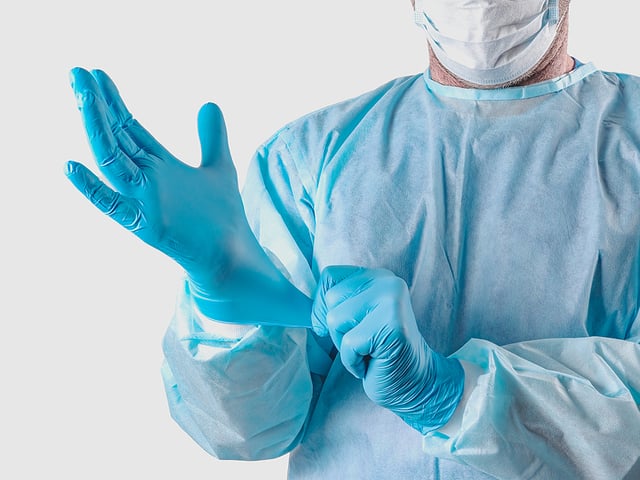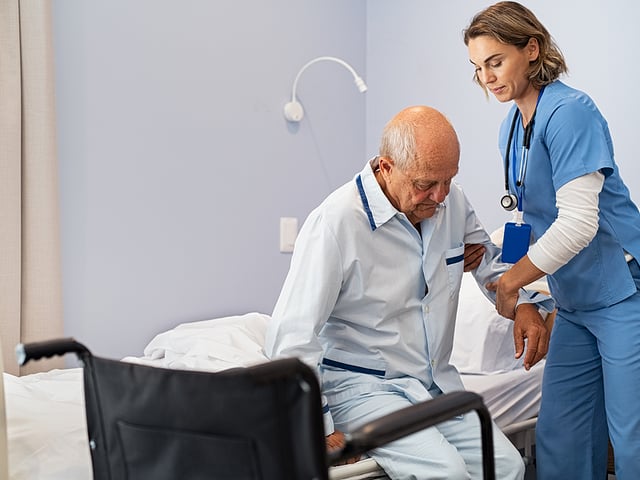
CNA Skills: Personal Hygiene and PPE
As a healthcare professional, there are two fundamental skills that demand your unwavering attention: handwashing and proper donning and doffing of Personal Protective Equipment (PPE). Both are vital for infection control, especially when dealing with vulnerable populations. Mastering these skills is not only essential for your skills examination but also critical for ensuring your safety and that of your patients.
Handwashing
While your skills examination will select some skills at random, almost every state will test on handwashing as a separate skill along with handwashing before, during, and after other skills, so it is crucial that this one is mastered. You will likely be asked to wash your hands at the beginning of the exam and then reference when you would wash your hands when performing other skills.
Here are the steps and a few tips to ensure this skill is performed correctly:
Prepare for Success: Before commencing the handwashing process, ensure that you are appropriately dressed. If you have any accessories like a watch, bracelets, or rings, remove them, and if you’re wearing long sleeves, roll them up to avoid any interference during the procedure. Additionally, make sure that your clothing does not touch the sink, maintaining a clean and hygienic environment.
Temperature Check: As you turn on the water, take a moment to gauge the temperature. The water should be comfortably warm but not hot enough to cause discomfort or harm. Remember to leave the water running throughout the handwashing process.
Effective Handwashing Technique: Wet your hands thoroughly, ensuring the water reaches up to your wrists. Apply an ample amount of soap and create a rich lather with friction for a duration of at least 20-30 seconds, unless your hands are visibly soiled or have come into contact with bodily fluids, in which case you should wash for at least one minute. Pay close attention to cleaning under your fingernails, as this area is a common harbor for germs and bacteria. If necessary, reapply soap and re-wet your hands to maintain a robust lather.
Mind the Position: While washing your hands, ensure that your hands remain lower than your elbows. This position helps prevent any lingering microorganisms from traveling up your arms. Be cautious not to let your hands touch the counter or the inside of the sink during the process; if this occurs, restart the handwashing procedure.
Thorough Rinse: Rinse your hands thoroughly under warm running water, making sure to keep your hands lower than your elbows throughout this step.
Drip, Don’t Shake: After rinsing, allow your hands to drip-dry naturally. Avoid the temptation to shake your hands, as this can spread droplets containing potentially harmful microorganisms.
Drying with Care: Grab a disposable paper towel to dry your hands. Start from your fingertips and work your way up to your wrists. This method ensures that any potentially dirty areas above the wrist don’t transfer back to your fingers. Once dry, promptly discard the used paper towel.
Turning Off the Faucet: Before concluding the handwashing procedure, take a new, dry paper towel and use it to turn off the water faucet. This precaution prevents recontamination of your clean hands. As always, discard the paper towel appropriately.
Donning and Doffing Gowns and Gloves
Understanding how to properly don and remove Personal Protective Equipment (PPE), such as gowns and gloves, is of utmost importance for healthcare professionals. This vital skill is frequently assessed, making it crucial to familiarize yourself with the correct procedures. Let’s explore the step-by-step process and valuable advice to ensure you execute this skill flawlessly:
Hand Hygiene First: Before engaging in any PPE procedures, prioritize hand hygiene. Wash your hands thoroughly with soap and water or use hand sanitizer if handwashing facilities are unavailable. Alternatively, inform the examiner that you would wash your hands to set the groundwork for safe PPE application.
Choose the Right Gear: Select a gown and gloves that fit you properly and are free from any damages or defects. Ensuring the integrity of your PPE is essential to maximize protection.
Donning the Gown: Unfold the gown carefully, making sure the opening is at the back. Gently slip your arms through the sleeves, ensuring complete coverage. Tie the gown snugly at the neck and then at the waist, ensuring the gown overlaps at the back, leaving no exposed skin vulnerable.
Eyewear Placement: If required to wear eyewear, put it on after donning the gown and before wearing gloves. This step enhances protection against potential splashes or aerosols.
Gloves On: Now, it’s time to put on gloves. Slide your hands into the gloves and ensure that they comfortably overlap with the cuffs of the gown, leaving no gaps or exposed areas.
Simulate Patient Interaction: During the skills examination, you might be asked to simulate entering a patient’s room and performing an activity. Emphasize the importance of maintaining appropriate PPE throughout the interaction.
Doffing the Gown and Gloves: Before exiting the patient’s room, remove the gown and gloves cautiously to prevent contamination.
Glove Removal: Start by removing the first glove by using the gloved hand to peel it off, turning it inside out as you go. Then, insert your clean fingers under the cuff of the second glove and carefully remove it by peeling it off inside out. This technique ensures that any contaminants stay on the inside of the gloves, away from your clean hands. Properly dispose of the gloves in the designated receptacle.
Gown Disposal: Untie or break the gown tie at the neckline, and gently remove the gown, turning it inside out as you go. This technique contains any potential contaminants within the gown. Discard the gown safely.
Eyewear Removal: If you’re wearing eyewear or a face shield, remove it carefully, avoiding any contact with the front surface, and place it in the appropriate receptacle for cleaning or disposal.
Final Hand Hygiene: Now that all PPE has been removed, practice hand hygiene once again. Wash your hands thoroughly with soap and water or use hand sanitizer to eliminate any remaining contaminants and maintain a high level of cleanliness.
Final Thoughts
As a healthcare professional, mastering essential skills like handwashing and proper donning and doffing of PPE is paramount to ensuring your safety and that of your patients. Handwashing, being a skill commonly assessed in almost every state examination, demands meticulous practice and attention to detail. Similarly, knowing the correct procedures for donning and doffing gowns and gloves is vital to protect yourself and those under your care from potential contagions. To reinforce your preparation for the CNA skills examination, consider utilizing CNA practice tests and study guides, which offer invaluable resources to enhance your understanding and confidence in these critical skills. By dedicating yourself to mastering these fundamental practices, you lay a solid foundation for a successful and fulfilling career as a Certified Nursing Assistant, committed to upholding exceptional standards of care and promoting optimal health and well-being in the healthcare setting.
Keep Reading

Certified Nursing Assistant Exam Blog
How Long Does it Take to Become a CNA?
As a profession on the frontline of healthcare, Certified Nursing Assis…

Certified Nursing Assistant Exam Blog
How to Do Well on the CNA Skills Test
Over 1.3 million nursing assistants work in our healthcare system today…

Certified Nursing Assistant Exam Blog
What Does a Nursing Assistant (CNA) Do?
Are you interested in exploring medical careers? The healthcare industr…